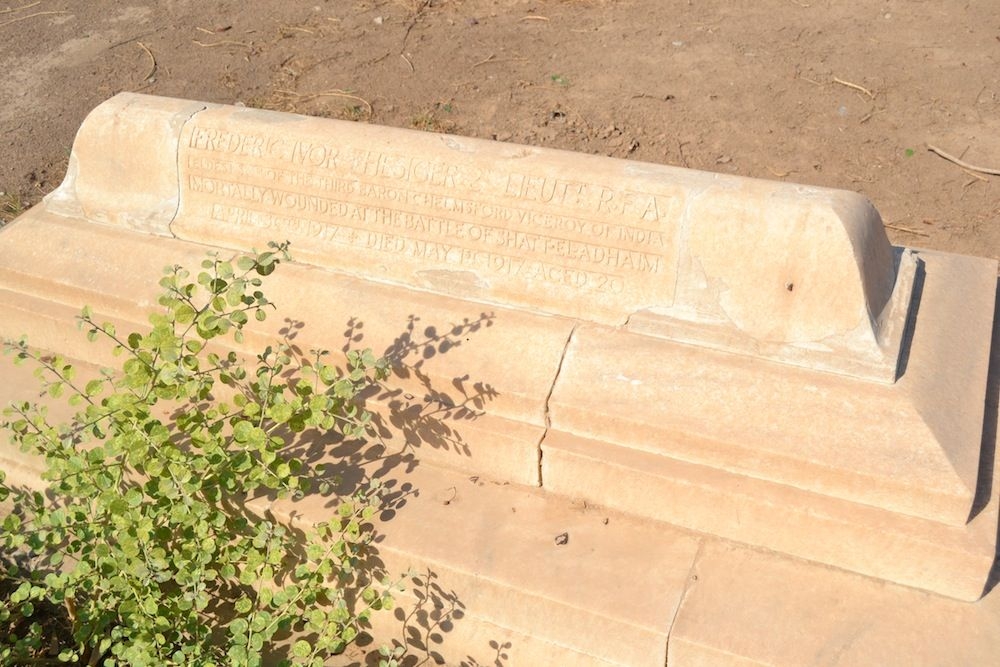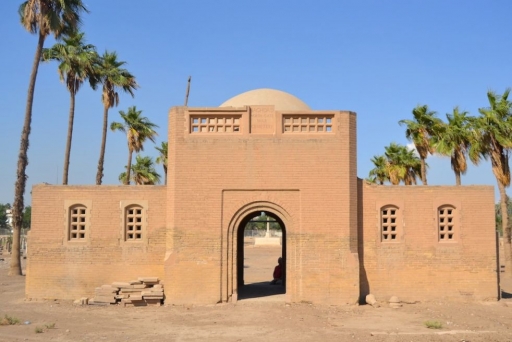Author Sean McLachlan writes about his visit to Baghdad North Gate Cemetery where Commonwealth and Turkish First World War dead are buried.
In a dusty, semi-industrial neighbourhood of central Baghdad stands one of the Commonwealth’s most remote and least-visited cemeteries.
The Baghdad North Gate Cemetery was founded in April 1917 during the Great War’s Mesopotamian Campaign. While often considered a sideshow, this campaign was an important part of the war effort and a brutal endurance contest for those who fought it.
I had the privilege to visit this cemetery last year as part of a trip around Iraq. An unstable political situation and recurrent violence mean the Commonwealth War Graves Commission hasn’t been able to maintain the cemetery to its usual high standard.
On my visit I found some headstones to be worn or chipped, and a few have broken entirely. Trash blowing in from the nearby street is not cleaned up, and shattered bottles attest to the cemetery’s popularity as a night-time drinking spot.
Despite this, my group and I were greeted warmly at the gate by the lone guard and found our stroll through the quiet cemetery to be rewarding and introspective. A total of 4,454 identified casualties are buried here, mostly from the Mesopotamian Campaign, although there are also men who died while in service suppressing Arab revolts in the interwar years as well as some World War Two dead.
A memorial to Hindu and Sikh soldiers
The graves show a diversity as great as the British Empire itself. Numerous names from undivided India are in evidence, and there are religious dedications for Muslims, Hindus, and Sikhs as well as Christians.
The highest-ranking burial is that of Lt.-Gen. Sir Stanley Maude, who died of cholera on November 18, 1917, after drinking tainted milk. In fact, the majority of deaths in the Mesopotamian campaign were due to disease or heatstroke.
Maude served in France and Gallipoli before being transferred to Mesopotamia in March 1916 to set things right after the disaster at Kut. He led his forces steadily up the Tigris, recapturing Kut and defeating the Ottoman Turks in a series of engagements. He took Baghdad on March 11, 1917, and started expanding the Empire’s hold on Mesopotamia. His untimely death led to a scaling back of operations in the theatre.

Frederic Thesiger’s grave
Another grave of interest is that of Lt. Frederic Thesiger, who was mortally wounded at the Battle of Shatt-el-Adhaim on April 30, 1917, and died the next day. Thesiger was the son of Gen. Frederic Thesiger of Isandlwana fame. The nephew of the younger Frederic was the famous explorer Wilfred Thesiger.
I was pleasantly surprised to see a monument to a hundred Ottoman soldiers who fell in the Mesopotamian Campaign. This reminded me of some of the cemeteries on the Western Front, where Germans, British, and other nationalities share the same hallowed ground.
Unknown Ottoman soldiers who died during the Mesopotamian Campaign
Considering their recent history, it’s not surprising that the Iraqis don’t give much thought to the Great War. However, a succession of governments, including Saddam Hussein’s, have worked with the Commonwealth War Grave Commission to make sure the cemeteries are properly maintained.
One can only hope that Iraq will stabilize enough that this can again be the case, and that curious visitors will be able to stroll around the cemetery without the escort of two armed guards from the Interior Ministry!
Until then, you can see a Roll of Honour for all casualties buried in Iraq at the Commonwealth War Graves Commission headquarters in Maidenhead.
Sean McLachlan is an archaeologist turned writer and the author of numerous books of fiction and history. More details of his work can be found here. Sean also writes a blog.
© Centenary Digital Ltd & Author
All pictures © Sean McLachlan
